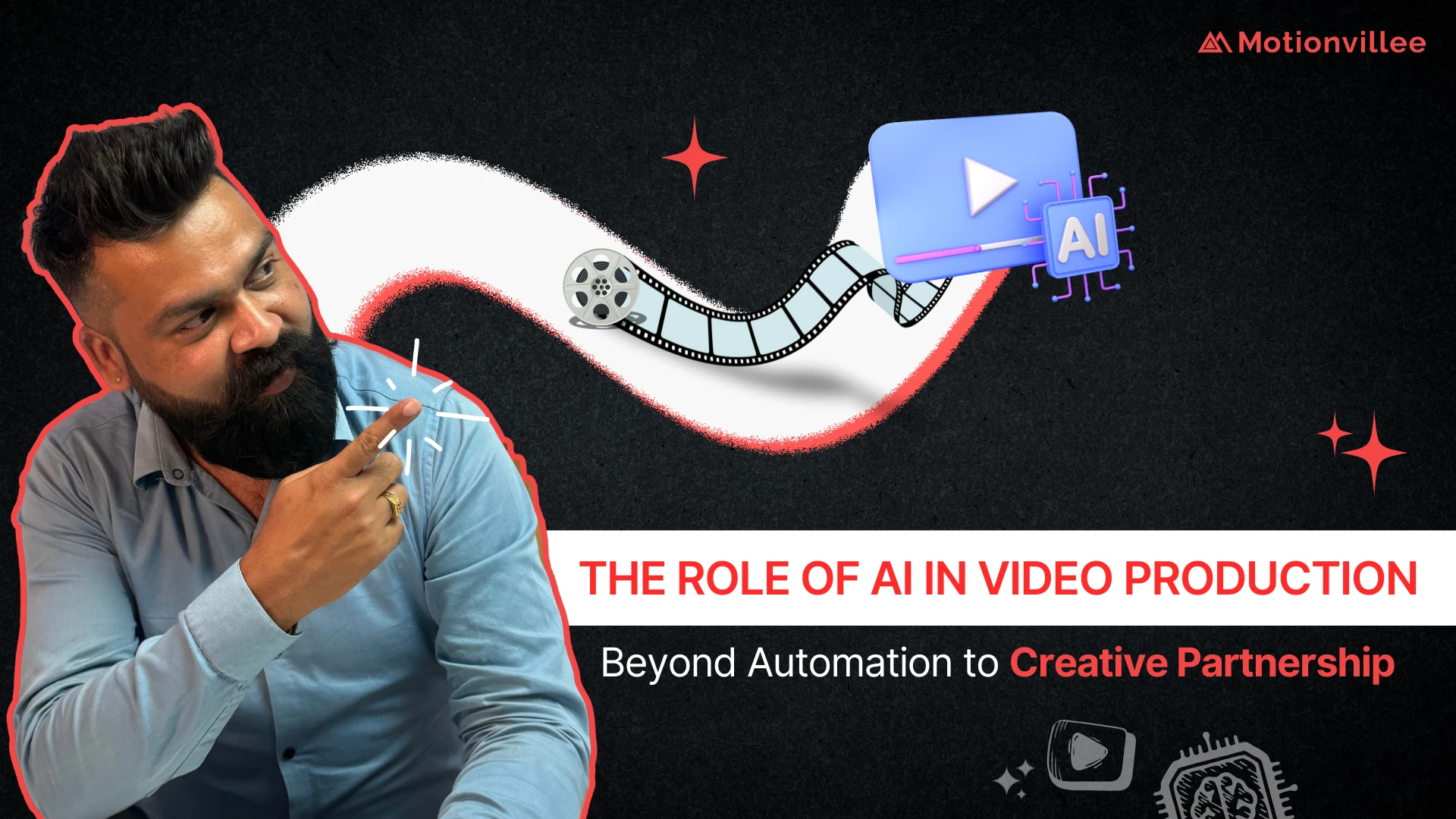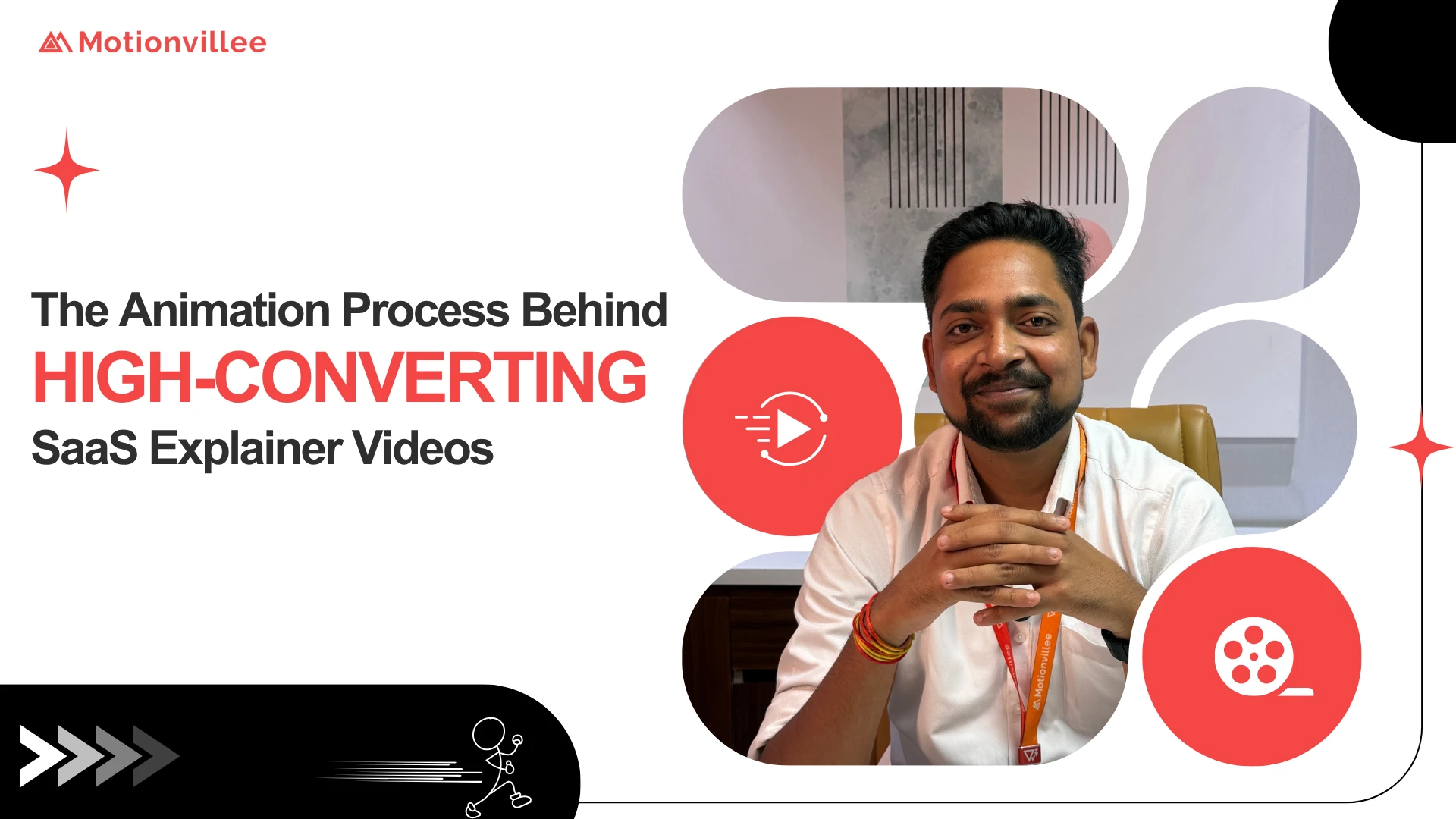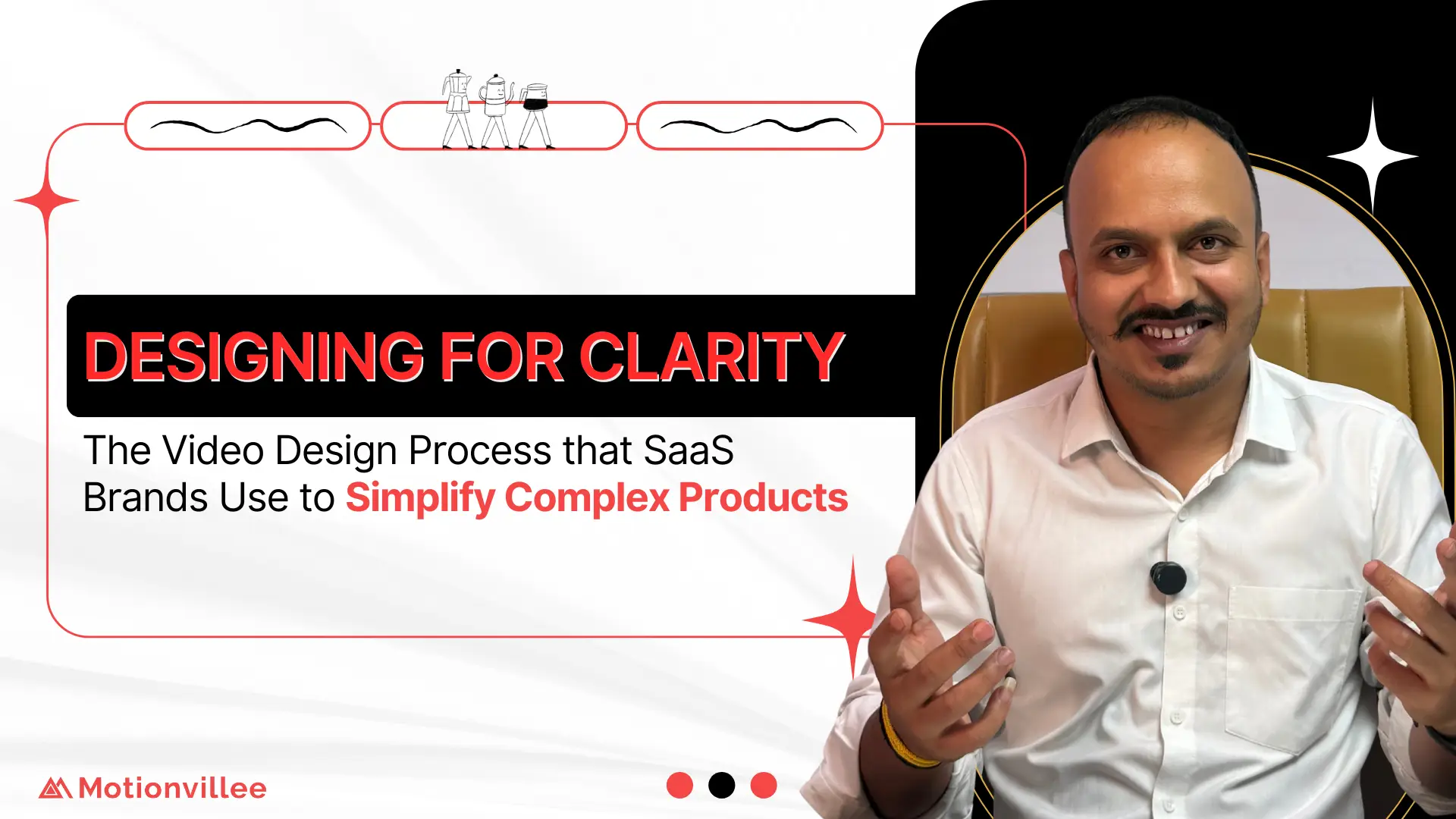Why is your competitor’s video outperforming yours?
Your competitor’s video is outperforming yours because their strategy, storytelling, and ROI focus are stronger. A Competitor SaaS Explainer Video often succeeds not because of luck, but because it is carefully planned, audience-specific, and tied directly to business outcomes.
When leaders ask why competitor videos perform better, the answer usually lies in overlooked details. Strong scripts, clear hooks, sharp visuals, and defined calls to action separate a winning video from one that underperforms. These differences create real video performance gaps that impact pipelines and sales.
This blog highlights 31 reasons why your competitor’s video might be winning and offers practical fixes for each. Think of it as your guide to understanding where your strategy falls short and how to close those gaps.
By addressing these issues, your video will not only compete but also outperform in clarity, engagement, and ROI. Partnering with experts in Explainer Video Production helps ensure these questions are answered before you invest further.
Strategy and Planning

1. Do you have clear goals for your video?
A video without clear goals cannot succeed because there is no way to measure performance.
Before creating any content, you need to define what the video is meant to achieve. Is it for brand awareness, lead generation, or direct conversions? Each goal requires a different approach to scripting, style, and promotion.
For example:
- Awareness videos prioritize reach and brand recall.
- Consideration videos educate prospects and build trust.
- Decision-stage videos push viewers toward a purchase or demo.
A strong SaaS video strategy begins with clarity of purpose. Without it, you may create polished content that looks good but fails to impact your pipeline.
2. Is your video aligned with your sales funnel?
Videos that map directly to your sales funnel drive stronger conversions.
The awareness stage requires short, attention-grabbing content. The consideration stage needs deeper context, like product walk-throughs or case studies. The decision stage should feature proof points, testimonials, or detailed demos.
When videos are placed randomly without funnel alignment, prospects lose interest. Aligning videos to funnel stages ensures that each viewer gets the right message at the right time, leading to better ROI.
This is where working with experts in SaaS Explainer Video helps. They understand how to design videos that fit naturally into your funnel while serving specific business outcomes.
3. Are you benchmarking against the right competitors?
Benchmarking only works if you compare against the right set of competitors.
Too often, companies compare their videos with peers who are equally struggling. Instead, look at category leaders or fast-scaling startups to see what they are doing differently.
Competitor video analysis should focus on:
- Structure: How do they open and close?
- Storytelling: What problem-solution flow do they use?
- Distribution: Where are they promoting and how often?
- Engagement: What metrics show high viewer retention?
By benchmarking against stronger players, you identify performance gaps worth fixing. This gives you a roadmap for improvement instead of reinforcing existing weaknesses.
Audience and Messaging
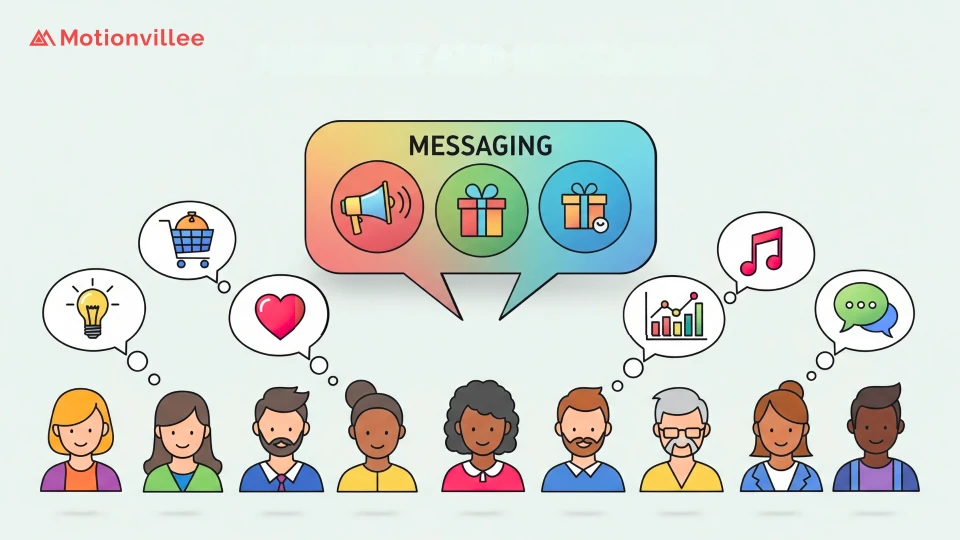
4. Does your video target a specific audience?
Videos that try to reach everyone often fail to connect with anyone.
A SaaS video target audience should be clearly defined before the script is written. Decision-makers like CFOs want ROI details, while CMOs look for growth outcomes and usability. If your video does not tailor the message to these expectations, it risks being ignored.
The fix is to narrow your audience and craft buyer-focused video messaging. When your video speaks directly to the right persona, it feels relevant and trustworthy. This is where Brand Explainer Video Production can help by structuring the narrative around your exact buyers.
5. Is the problem statement clear from the start?
A strong video highlights the customer’s pain point immediately to keep viewers engaged.
When your audience hears their challenge described upfront, they are more likely to stay and watch the solution. Many underperforming videos skip this and dive into product features too quickly.
A better approach is to ask: What is the number one issue my buyers want solved? Frame your opening around that issue. Clear customer pain points in SaaS videos build relevance, trust, and interest.
6. Are you speaking in the language of your buyers?
Videos perform better when the script reflects how buyers actually talk about their problems and goals.
Executives are not impressed by buzzwords or overly technical jargon. They want clarity, proof, and outcomes. For instance, instead of saying “advanced data integration,” you could say “save hours by combining your reports in one place.” That shift makes the message sharper and easier to act on.
Tailoring language also means adjusting tone for different buyer roles:
- CFOs value numbers, savings, and compliance.
- CMOs look for growth stories and brand trust.
- COOs focus on efficiency and scale.
A buyer-focused video messaging approach ensures each group hears what matters most to them.
Storytelling and Structure
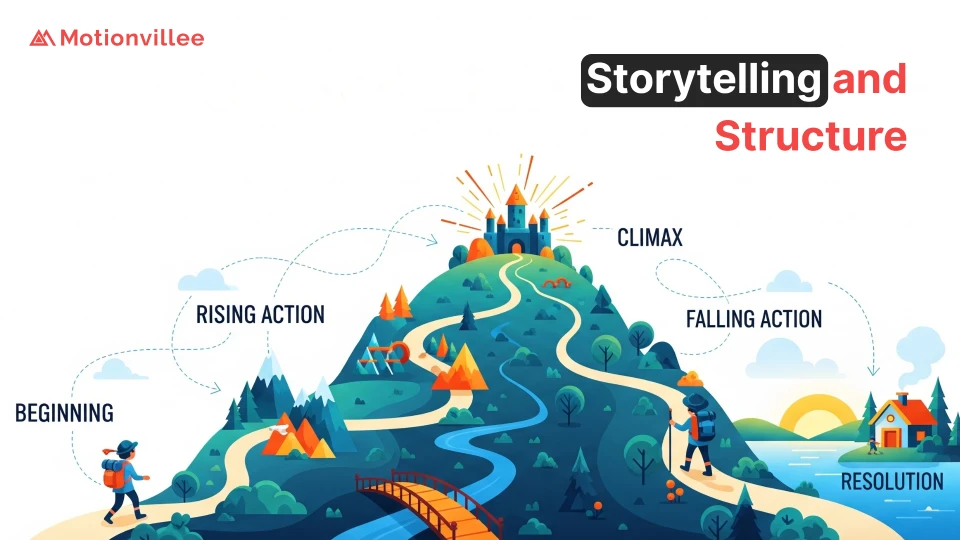
7. Does your video open with a strong hook?
A strong hook is what keeps viewers from dropping off in the first 10 seconds.
If your SaaS explainer video starts slowly or vaguely, decision-makers will not stay to hear the solution. Hooks can be as simple as asking a bold question, stating a surprising fact, or showing a relatable scenario. The key is to make the audience feel, “This video understands my problem.”
A well-planned SaaS video hook ensures your message gets the attention it deserves before prospects scroll away.
8. Is there a clear narrative arc?
A clear narrative arc makes your video easy to follow and more persuasive.
The most effective SaaS video storytelling follows a sequence: problem, solution, proof, and action. This format reflects how decision-makers process information. First, they want to see their challenge acknowledged. Next, they need a solution explained in simple terms. Then they look for proof, such as testimonials or case studies. Finally, they expect a clear next step.
Without this flow, your video feels scattered and fails to build momentum. Structuring your script around a logical arc ensures higher retention and stronger conversions.
9. Do you keep sentences short and simple?
Short and simple sentences increase clarity and improve recall.
Executives are busy, and they do not want to decode complex phrasing. If your script sounds like a whitepaper, you will lose engagement quickly. Instead, a video script flow built on plain language keeps attention and ensures your value proposition is absorbed.
Practical test: read your script aloud. If a sentence feels heavy or hard to say, simplify it. This exercise ensures the delivery matches how people naturally speak and listen.
Creative and Production Quality
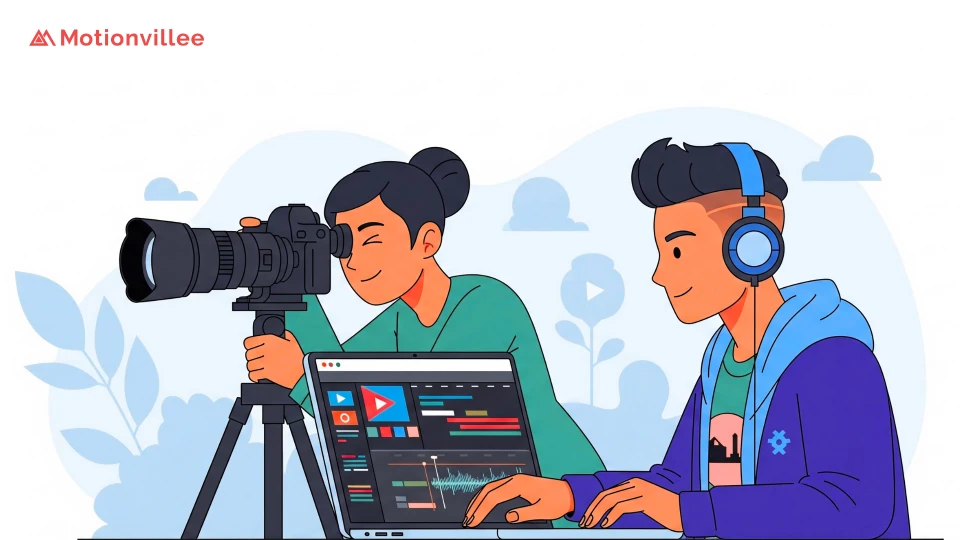
10. Is the video visually consistent with your brand?
A video that looks inconsistent with your brand weakens trust and recognition.
Viewers should instantly recognize your company through design, colors, fonts, and overall style. If your SaaS video design quality feels disconnected from your website or other materials, it creates confusion. Consistency reinforces brand credibility and helps buyers remember you.
Aligning visual identity across platforms also makes your marketing look professional and unified.
11. Are your graphics modern and professional?
Outdated graphics make even a great message feel less credible.
Audiences expect clean, sharp, and professional SaaS video visuals. Stocky animations or dated templates suggest a lack of investment and can harm your brand image. Competitors who invest in modern design win more attention because their videos feel current and trustworthy.
Investing in fresh visuals is not just about looks, it is about signaling authority and competence.
12. Is sound quality crisp and clear?
Poor audio quality can drive viewers away faster than weak visuals.
No matter how polished your graphics are, distorted or muffled sound makes the experience frustrating. Good SaaS video audio quality involves professional voiceovers, balanced background music, and consistent volume. Sound is critical because decision-makers often multitask while watching videos, and clarity ensures they absorb the message.
Think of audio as half the experience, if it fails, the video underperforms no matter how strong the visuals are.
Value and ROI Alignment

13. Does your video highlight benefits, not just features?
Videos that highlight benefits resonate more with buyers than those focused only on features.
Decision-makers want to know how your solution impacts their goals. A list of features may inform, but benefits persuade because they connect directly to outcomes like cost savings, time efficiency, or reduced risk. If your video focuses only on what the product does instead of what it achieves, your competitor’s video will appear more compelling.
The fix is to translate features into clear benefits. For example, instead of saying “automated reporting,” say “save ten hours a week with instant reports.” That is what buyers care about.
14. Is there a clear and specific call-to-action?
A call-to-action must guide the viewer to the exact next step or the video loses momentum.
Generic CTAs such as “learn more” or “get started” are too vague. A strong video call to action should be precise and measurable, like “schedule a demo today” or “download the ROI calculator.” These prompts tell the audience what to do, reduce hesitation, and make conversions easier to track.
Every successful video closes with a CTA that fits its role in the funnel, whether for awareness, consideration, or decision.
15. Can you track ROI from the video?
ROI tracking is the only way to prove if your video is performing as intended.
If you cannot measure results, you cannot justify the investment. Tracking metrics like engagement rate, lead quality, conversion rate, and influenced revenue gives clarity on whether the video is driving business growth. Competitors who monitor and optimize their SaaS video ROI stay ahead because they refine what works and drop what does not.
Adding UTM codes, integrating video with CRM tools, or using platform analytics helps you measure ROI accurately. This data ensures your video strategy is not just creative but business-focused.
Key takeaway
Value alignment separates a polished video from one that drives real results. Highlighting benefits, guiding viewers with clear CTAs, and tracking ROI are non-negotiable steps. Without them, your video looks good but fails to deliver measurable impact. Partnering with experts in B2B Video Production ensures every script, CTA, and metric is tied to outcomes that matter for your business.
Distribution and Promotion

16. Are you publishing videos on the right platforms?
Publishing on the wrong platforms limits visibility and performance.
For SaaS, LinkedIn works best for B2B outreach, YouTube drives reach and search discovery, and email nurtures leads in the pipeline. If you are only sharing videos on one channel, you miss opportunities where your buyers spend time. A smart SaaS video promotion plan matches platforms with audience behavior.
The fix is to diversify distribution while tailoring the format to each channel. Short, sharp clips for LinkedIn, detailed demos for YouTube, and personalized snippets for email keep the message consistent but audience-specific.
17. Do you optimize videos for SEO?
Videos that are not optimized for SEO are harder to discover, even if the content is strong.
Optimizing means writing keyword-rich titles, descriptions, and tags, plus adding transcripts for search indexing. This step improves SaaS video SEO optimization, helping your content appear in searches when decision-makers are actively looking for solutions.
Without this, your competitor’s video will be discovered first simply because it is easier to find.
18. Is paid promotion part of your plan?
Relying only on organic reach restricts growth and engagement.
Paid distribution ensures your video gets in front of the right audience faster. LinkedIn ads, YouTube pre-rolls, or targeted retargeting campaigns help you reach executives already in-market for your solutions. Competitors who invest here are not just lucky; they are strategically amplifying reach.
The right balance is combining organic sharing with targeted paid promotion. Even a modest spend increases visibility and ROI when aligned with clear goals.
Key takeaway
Distribution is often where videos succeed or fail. Even the best creative cannot deliver ROI if nobody sees it. A strong promotion strategy includes platform-specific content, SEO optimization, and paid support where needed. Partnering with experts in Social Media Video Production helps ensure your SaaS video reaches the right decision-makers in the right places, maximizing both impact and return.
Engagement and Performance
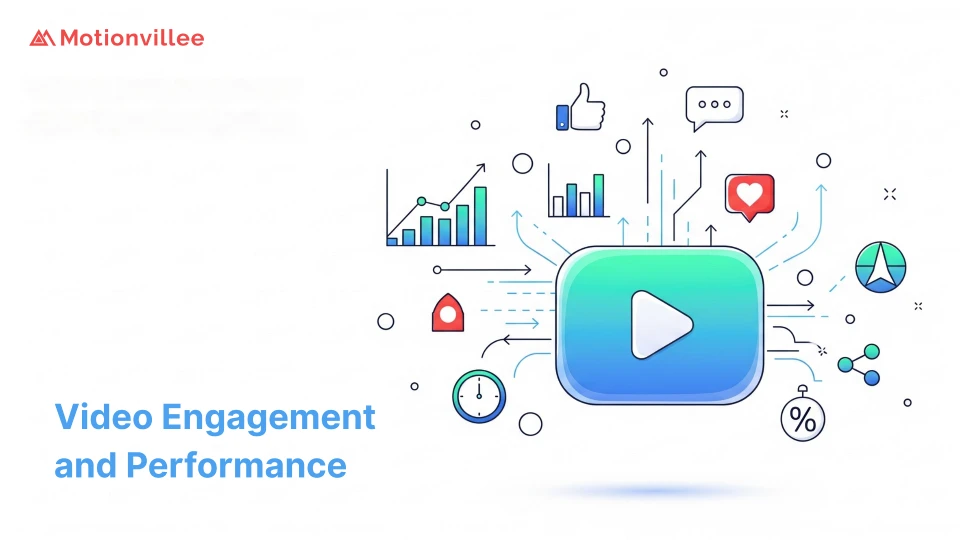
19. Do you track viewer engagement metrics?
Without engagement metrics, you cannot understand how your video is performing.
Metrics like watch time, drop-off points, and click-through rates reveal whether your content holds attention or loses it early. If your competitor tracks these insights and you do not, they can refine their videos while yours remain static.
Tracking SaaS video engagement ensures you know what resonates with decision-makers and what needs adjusting. Tools like YouTube Analytics, Wistia, or HubSpot give clear visibility into how buyers interact with your content.
20. Are you A/B testing thumbnails and titles?
Small creative changes in thumbnails and titles can make a big difference in performance.
Testing helps identify which visuals and wording drive higher clicks and longer views. For example, a thumbnail with a person often outperforms one with just text, while a headline that highlights value (“Cut Costs in 60 Seconds”) performs better than a vague title.
Skipping this step means missing out on incremental improvements that can compound into large gains. Competitors who test and refine consistently will achieve stronger SaaS video metrics over time.
21. Do you repurpose content across channels?
Repurposing videos ensures you get the maximum ROI from each piece of content.
One long explainer can be trimmed into short social snippets, converted into GIFs for email campaigns, or adapted into blog content with embedded clips. This not only expands reach but also helps you engage buyers in multiple touchpoints.
Competitors that repurpose content amplify their presence, while those who post once and move on leave value on the table. Repurposing drives stronger competitor video watch time and stretches every production dollar further.
Key takeaway
Engagement is not just about making a video once; it is about continuously refining and reusing it. Tracking metrics, testing creative elements, and repurposing content all compound to improve performance. Teams that take engagement seriously see stronger pipelines and better returns. Working with experts in Sales & Marketing Videos ensures every asset is optimized not just for views but for measurable business outcomes.
Advanced Fixes
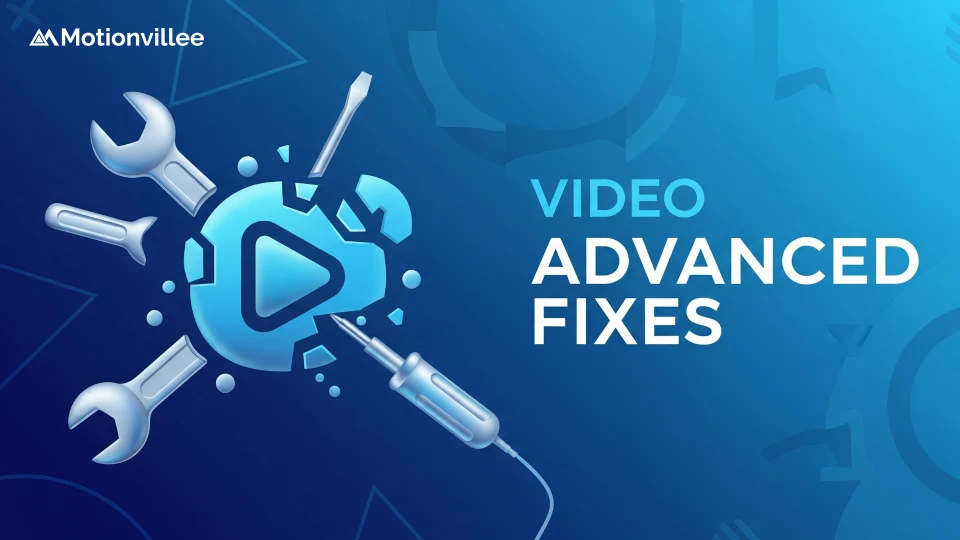
22. Are you leveraging customer testimonials?
Customer testimonials add credibility that competitors often use to their advantage.
A SaaS customer testimonial video shows real users explaining how your product solved their problem. This kind of proof carries more weight than marketing claims because it comes from a peer. If your video lacks testimonials, it misses a chance to build trust quickly.
The fix is to include authentic stories with measurable results. A short clip of a client sharing ROI or time saved can be more persuasive than a feature list.
23. Do you use storytelling for case studies?
Case studies presented as stories are easier to follow and more engaging.
A written case study can feel dry, but a video that highlights the challenge, solution, and outcome creates a narrative buyers connect with. Competitors who use SaaS case study videos stand out because they combine storytelling with data-backed results.
By framing proof points as stories, you make them memorable and persuasive. Instead of numbers on a slide, viewers see real growth journeys they can relate to.
24. Is your video mobile-friendly?
Many decision-makers watch videos on their phones, so mobile optimization is critical.
If your video looks cluttered on a small screen, uses tiny fonts, or has poor loading times, it will lose viewers. Competitors who prioritize mobile-friendly SaaS videos capture engagement across more devices.
Practical steps include using larger text, avoiding overly detailed visuals, and testing playback across devices. Mobile-first design ensures your video delivers value wherever your audience watches.
Key takeaway
Advanced fixes give you an edge when competitors already meet the basics. Testimonials provide social proof, case study storytelling adds depth, and mobile-friendly design ensures accessibility. Overlooking these elements creates hidden gaps in performance. Partnering with experts in How to Video Production helps you integrate these advanced techniques effectively so your SaaS videos achieve both trust and impact.
Competitive Differentiation
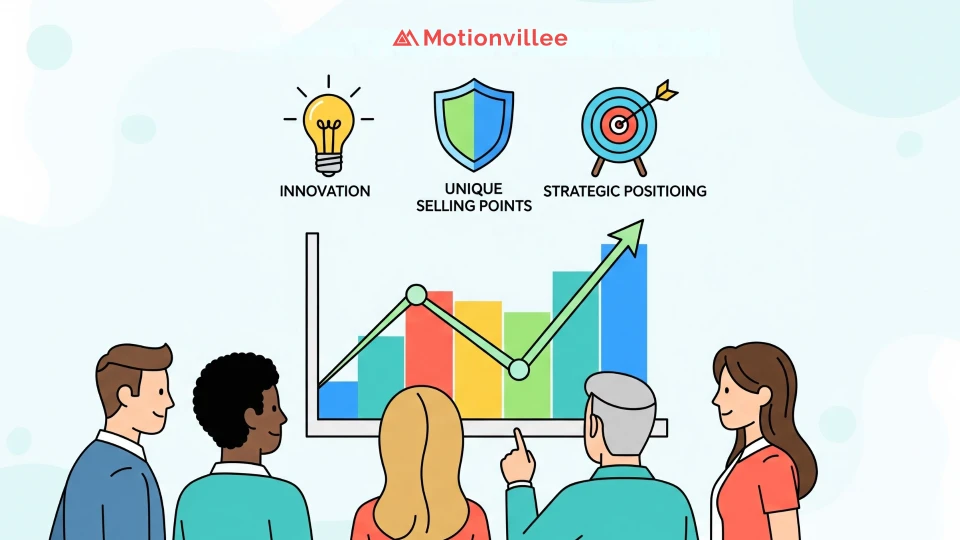
25. Does your video explain why you are unique?
Videos that fail to highlight uniqueness blend into the noise of the market.
If your content only lists features that competitors also claim, buyers see no reason to choose you. A strong SaaS video differentiation approach makes it clear what sets your company apart. That might be faster deployment, deeper compliance expertise, or more transparent pricing.
The fix is to highlight competitive edges directly in your script. Buyers want to know why you are different, not just what you do.
26. Do you showcase thought leadership?
Thought leadership builds authority and positions your brand as a trusted voice.
Competitors who share insights, predictions, or unique frameworks through video gain credibility beyond their product. A video that features your CEO discussing industry trends or your team presenting research establishes your company as more than a vendor.
By embedding thought leadership in SaaS videos, you earn attention from executives who value expertise and foresight. This is often the difference between a video that informs and one that influences decisions.
27. Are you faster at producing content than competitors?
Consistency and speed in publishing videos keep your brand visible and relevant.
A single video may impress, but a steady stream builds recognition. Competitors who publish more frequently dominate attention because buyers encounter their content multiple times in the decision cycle.
Improving production workflows helps you publish faster without sacrificing quality. Leveraging formats like short clips, live sessions, or updates reduces lead time and keeps content flowing.
Investing in Start-up Video Production ensures even emerging brands can maintain a consistent presence that competes with larger players. Speed plus relevance builds stronger pipelines.
Key takeaway
Differentiation is not optional in competitive SaaS markets. Unique positioning, thought leadership, and faster publishing cycles help your videos stand out. If you only match what others are doing, your video becomes background noise. By actively showing what sets you apart and producing content consistently, you close the gap with competitors and build trust with decision-makers.
Long-Term Video Strategy
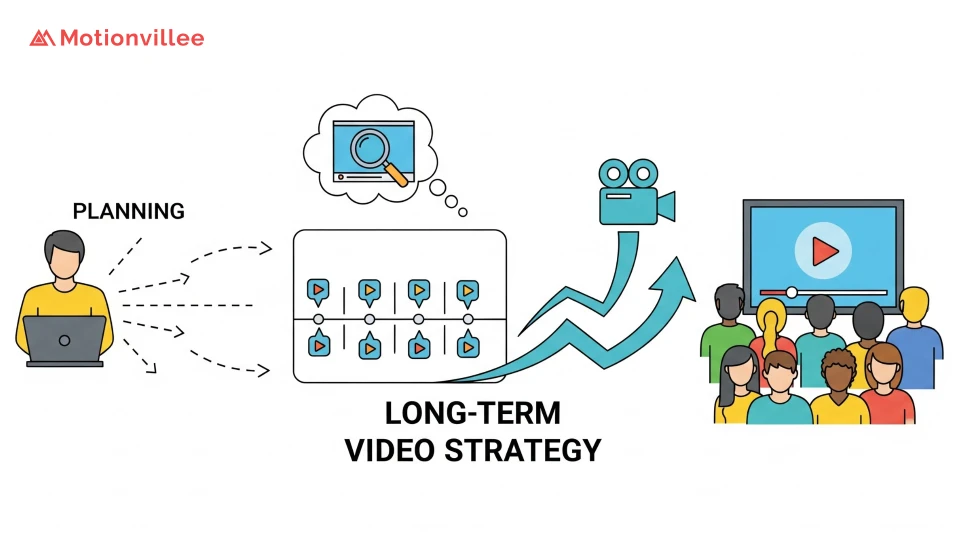
28. Are you building a video library, not one-offs?
One-off videos cannot compete with a consistent library of content.
Competitors with a structured library dominate because buyers see them repeatedly at different touchpoints. A single explainer might spark interest, but a library of demos, case studies, and testimonials builds authority over time.
A long term SaaS video strategy means planning content as a series, not as isolated projects. Think of your video library as an asset base that compounds value, driving more ROI as it grows.
29. Do you update old videos regularly?
Stale content reduces credibility, even if it was effective at launch.
If your product or messaging evolves but your videos remain outdated, buyers notice the disconnect. Competitors who refresh content stay relevant and accurate, signaling that they are active and current in their market.
The fix is to audit your library every quarter. Update statistics, swap outdated visuals, and revise scripts for clarity. Regularly updating SaaS videos keeps your message fresh and maintains trust.
30. Are you aligning video with broader campaigns?
Videos perform better when integrated into larger marketing efforts.
A clip on LinkedIn, a longer demo on YouTube, and a supporting email nurture all work together when tied to the same theme. Competitors who align videos with campaigns create consistent messaging across multiple channels.
The goal is to make videos part of the whole strategy, not an afterthought. Aligning with SaaS video content library planning ensures every video supports your campaigns and amplifies other channels like webinars, blogs, or events.
31. Do you treat video as an investment, not a cost?
Video delivers ROI when it is seen as a growth driver, not just an expense.
Companies that treat video as a cost cut corners, while competitors who see it as an investment allocate budget for quality and distribution. The long-term payoff is stronger engagement, better conversions, and faster sales cycles.
Decision-makers want content that feels professional, not rushed. Investing in Get Started Video Production ensures your video pipeline is not only active but also strategically built for long-term business growth.
Key takeaway
SaaS leaders who win with video think long term. They build libraries instead of one-offs, update content to stay fresh, align with campaigns, and invest for growth. Competitors outperform when they commit to consistent production and treat video as a strategic asset.
By embedding these habits into your long term SaaS video strategy, you create a foundation that compounds value, builds trust, and drives measurable ROI year after year.
How do you ensure your video performs better than competitors?
You can outperform a Competitor SaaS Explainer Video by addressing the strategic and creative gaps that hold your content back.
Competitors succeed because they plan carefully, define their audience clearly, tell stories with structure, and measure ROI. If your video misses even a few of these areas, it risks underperforming no matter how polished it looks.
The good news is that each of the 31 reasons outlined in this blog comes with a fix. From audience targeting to long-term strategy, small adjustments compound into meaningful improvements.
When you see video as an investment, not a cost, it shifts from being a marketing asset to a growth engine.
By asking the right questions and applying these lessons, you can ensure your videos build trust, accelerate sales, and deliver stronger ROI than the competition.




